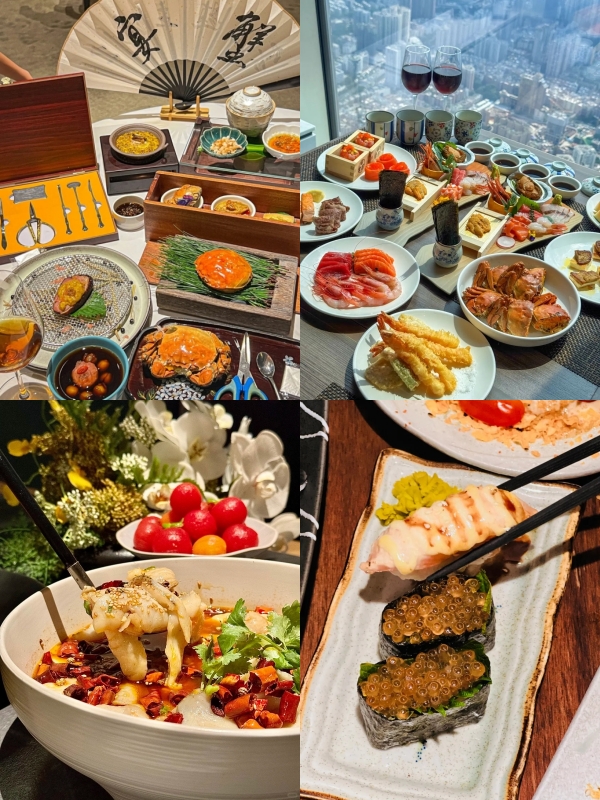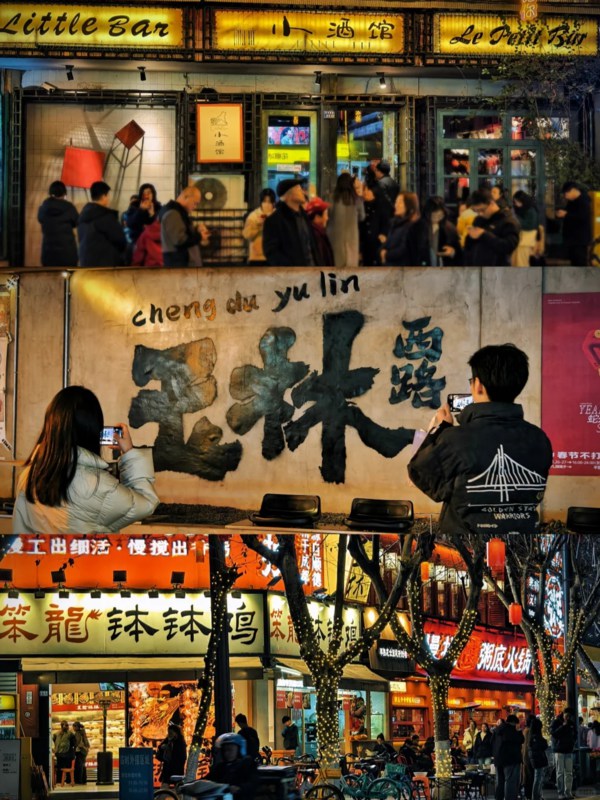Ever heard someone mention the “Chinese middle finger” and wondered what on earth that means? You’re not alone. This strange phrase has popped up in Reddit threads, travel blogs, and even awkward YouTube subtitles. But here’s the thing—it doesn’t really exist the way people think. In China, hand gestures carry totally different meanings, and if you’re planning a trip, knowing what not to do with your fingers might save you from some serious side-eyes. So before you panic about accidentally offending someone, let’s clear up the myth behind the so-called “Chinese middle finger.”
The actual meaning of the Chinese middle finger
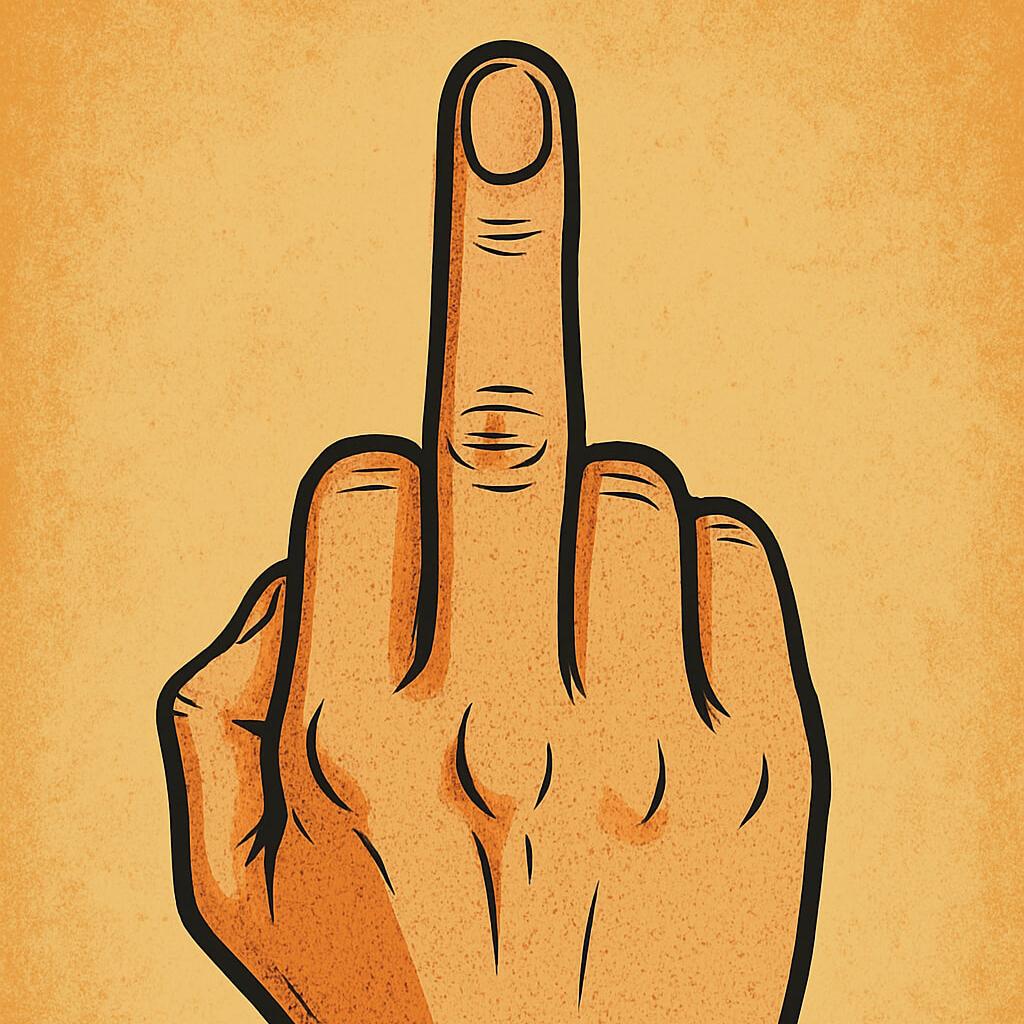
the middle finger
The phrase “Chinese middle finger” is a Western invention
Let’s get this out of the way first—“Chinese middle finger” isn’t actually a thing in China. Not in the way you probably think, anyway. The term popped up mostly in online forums, Reddit threads, and memes where people tried to explain unfamiliar gestures they saw in Chinese dramas or travel vlogs. Someone might see a pinky raised and go, “Oh, that must be their version of flipping the bird.” But it’s not. And once you start asking around—especially if you’re in China—you’ll realize locals aren’t even aware of this phrase.
I asked a Chinese friend from Nanjing about it once. She laughed. Not in a “you’re rude” way, more like a “where did you even hear that” kind of laugh. In daily life, people don’t call any gesture the “Chinese middle finger.” And no, raising your pinky at someone doesn’t automatically mean you’ve insulted them. At worst, it might suggest you think someone’s weak or insignificant—but even that depends heavily on context, tone, and, honestly, who you’re talking to.
Still, the phrase stuck online, especially in Western pop culture spaces that love quirky “East vs. West” comparisons. I get it—it’s catchy, and kind of funny in a lost-in-translation way. But if you’re traveling in China and worried about accidentally offending someone with your hand, this isn’t the one to lose sleep over. There are other things to be more careful about—and this phrase, while persistent, is mostly internet noise. It makes you wonder how many other “cultural facts” we just invented because they sound cool.
Chinese culture rarely uses the middle finger as an insult
Here’s the tricky part. Technically, the chinese middle finger doesn’t exist—not in the way it does in the West. You’re not going to find some ancient scroll or Confucian quote telling people to flip someone off when they're angry. It’s just not native to the culture. But—and this is important—that doesn’t mean people in China don’t know what it means now.
Thanks to Hollywood, TikTok, global sports, and well, the internet, the Western use of the middle finger in China is widely understood—especially among younger people and anyone who’s watched a Marvel movie. So, while you probably won’t see someone using it casually on the streets of Hangzhou or Harbin, you will get reactions if you try it yourself. Not because it’s part of Chinese body language, but because Western meaning has landed here too. A raised middle finger might not sting quite the same, but trust me, people know it’s meant to insult.
That’s why it gets awkward fast. I once saw a British backpacker in a Xi’an hostel jokingly flip the bird during a card game. A Chinese guy across the table paused, gave him a weird half-smile, and just said, “I know what that means.” The room got quiet. So yeah, even if the chinese middle finger isn’t a traditional thing, it’s become recognizable enough that you really, really shouldn’t use it. It feels like swearing in someone else's language and assuming no one will notice. But they do—and it’s just... not worth the moment of fake edginess.
The spiritual significance of the middle finger in Chinese traditions
Now this part—honestly? Most foreigners have no idea it exists. While we usually think of the chinese middle finger as either rude or irrelevant, there’s this whole layer in traditional Chinese thinking where fingers aren’t just fingers. They’re symbolic. The middle finger in particular has long been linked to the heart meridian in Traditional Chinese Medicine (TCM). Yeah, the heart. Like love, fire, life energy—all that stuff. And that changes things a little, doesn’t it?
In TCM, every finger is associated with a channel of energy, called meridians. The middle finger? It runs along what’s called the "pericardium channel"—you could think of it as the heart’s emotional armor. Acupuncturists sometimes stimulate this area when treating stress, chest tightness, or even insomnia. You might see monks or qigong masters tapping their middle fingers during meditation. Not because they’re stressed, but because it’s believed to help rebalance the spirit. There’s no anger in the gesture. It’s the opposite, really—it’s about clearing the mind.
And Taoist rituals take it even further. In certain mudras—those symbolic hand positions you see in temples or old scrolls—the middle finger is used to "cut through evil" or focus intention. It’s a very quiet, internal thing. Nothing to do with flipping anyone off. That’s why when you raise your middle finger in China thinking it’s edgy or funny, it’s almost jarring. Like turning something once used for spiritual clarity into a punchline. There’s something kind of ironic about that. Weirdly enough, it makes me feel like the gesture deserves a little more respect—at least in this part of the world.
Common rude gestures recognized in Chinese culture

Pointing with the index finger is rude in China
Pointing directly at someone with the index finger is considered impolite
Here’s something you’ll notice pretty quickly in China—people almost never point at each other with their index fingers. It’s not banned or anything, but socially? It feels off. The vibe is sort of like if you snapped your fingers at a waiter in New York. Not illegal, but yikes. So when someone points at a person with a stiff, extended finger, especially in public, it reads as aggressive. Like, “What’s your problem?” levels of energy.
Now imagine you’re a foreigner asking for directions, and you casually point at a passerby, trying to say “you mean him?” It doesn’t cause a scandal, no. But people might flinch, or even shift their body a little, like they don’t want to be "singled out." In China, the polite way to gesture toward someone is with an open palm—like you’re inviting them in, not calling them out. It’s subtle, but the difference matters. Especially in formal places like museums, hotels, or... embassies. Trust me, those are not the places to get creative with your fingers.
And this is where the chinese middle finger confusion sometimes adds to the mess. Some foreigners try to avoid using the index finger, so they awkwardly wave or half-lift another finger—and that, unintentionally, might look like a middle finger to someone from the West, while still reading rude to Chinese folks. Yeah, double trouble. So it’s safer—and easier—to stick with a relaxed, flat hand. It feels a bit formal at first, sure, but people really appreciate it. It shows you’re trying, and here, that effort goes a long way.
Invading personal space with hand gestures creates discomfort
You ever talk to someone and feel like they’re... a bit too close? Yeah, that happens everywhere. But in China, physical boundaries are shaped differently, especially when it comes to using your hands while talking. Let’s say you’re in a shop in Guangzhou and you're negotiating the price of tea—fun, right? You lean in, wave your hand, gesture toward the product. But if your hand is just inches from the seller’s face, you might not notice it, but they definitely will.
The thing is, hand gestures aren’t just about the gesture itself—they’re about space, rhythm, and how fast or slow you're doing it. Big, animated gestures that work fine in Italy or Argentina? Not so much here. Chinese conversation often takes place in what feels like a more “controlled” zone. People don’t usually talk with their hands flying all over the place. So if you’re expressive—nothing wrong with that—but you’ll want to dial it down, especially when your hands are moving toward someone else’s upper body or face.
And, circling back to our good friend the chinese middle finger—there’s a strange irony. You could raise your middle finger from five feet away and still cause less discomfort than waving any finger two inches from someone’s nose. One is rude in meaning, sure. The other is rude in presence. Neither is great. So yeah, maybe step back half a step when you’re explaining something with your hands. You’ll notice people lean in a bit more—and honestly, that tiny adjustment? It changes the whole interaction.
Friendly and polite hand gestures commonly used in China
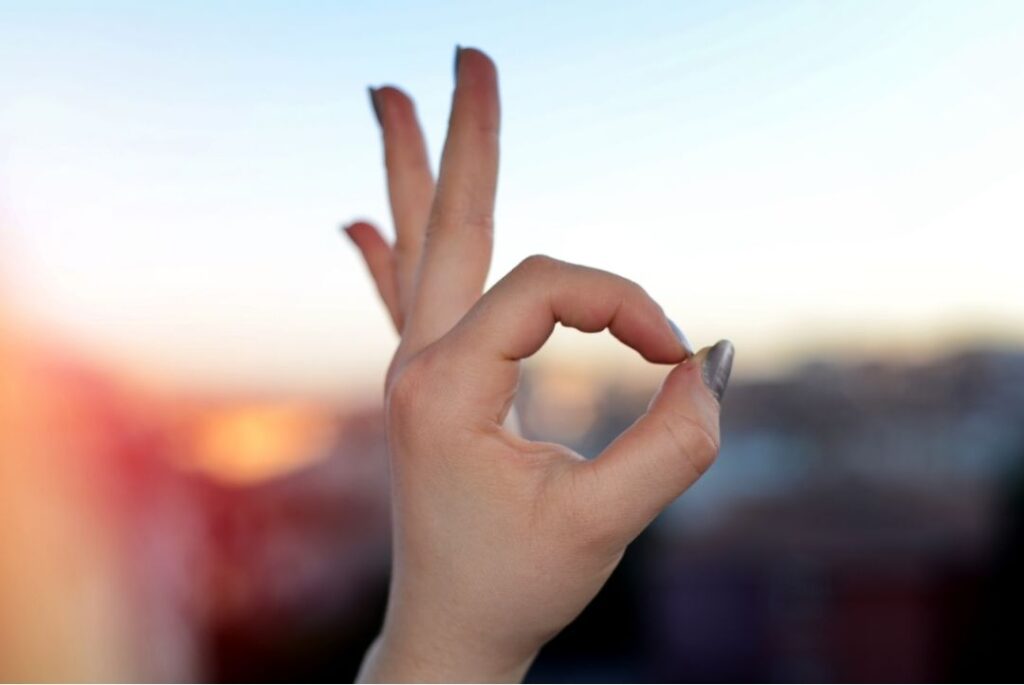
A friendly “OK” hand gesture
The fist-and-palm salute is used to express gratitude and good wishes
Ever seen a kung fu movie where someone presses a fist into a palm before bowing? That’s the fist-and-palm salute, or “zuo yi” (作揖). In China, it’s used to show thanks, send greetings, or offer respect—especially during Chinese New Year or formal events. Some people still use it at weddings or traditional festivals.
It’s not stiff or outdated. Actually, when you try it in front of locals—say, after someone gives you a small gift—it lands surprisingly well. Even in modern cities, it makes people smile. Left hand over right for men, right over left for women—that’s the usual rule, but nobody’s strict about it.And no, this isn’t anything like the chinese middle finger—in fact, it’s the exact opposite. It signals humility and sincerity. If you ever feel unsure how to politely thank someone in a more cultural way, this salute does the job without awkwardness.
Using both hands to give or receive items shows respect
One thing you’ll notice pretty fast: people here use both hands to give or take things. Whether it’s a cup of tea, a receipt, or a business card—it’s a subtle sign of respect. Using one hand might feel too casual, even careless, especially in formal or polite settings.
Say you’re checking into a hotel. Staff will hand you the key card with both hands. You should do the same when taking it—or when receiving a small gift. A little nod helps too. It’s not dramatic, just expected.Unlike the confusion around the chinese middle finger, this one’s easy to get right. Two hands = polite. Locals really appreciate it when foreigners catch on to that. It makes every little exchange feel smoother.
Thumbs-up and OK hand signs are positive and accepted
When in doubt, just give a thumbs-up. In China, that simple gesture usually means “good job” or “thank you.” It’s common across generations—from a grandma approving your Mandarin to a teenager reacting to your spicy hotpot choice.
The OK sign, where your thumb and index finger form a circle, is also totally fine. No weird hidden meanings here. Some locals might not use it much, but nobody’s offended. It’s just another positive way to respond, especially when you can’t speak the language.So don’t overthink this. If you’re worried about accidentally throwing out a chinese middle finger vibe, a thumbs-up is your safe bet. It always lands better than silence or confusion—and people usually smile back.
The “peace sign” gesture is widely used in photos
You’ve probably seen Chinese teens flashing a V-sign in every selfie. It’s everywhere—at the Great Wall, in bubble tea shops, on graduation day. Some say it symbolizes peace, others think it just looks cute. Either way, it’s lighthearted and never rude.Even little kids do it. Honestly, it’s almost automatic when someone holds up a phone.If you’re taking pics with locals, try it. You’ll blend right in, and maybe even get a laugh or two. It’s one of those small things that make the moment feel shared, not staged.
The cultural interpretation of other fingers in China
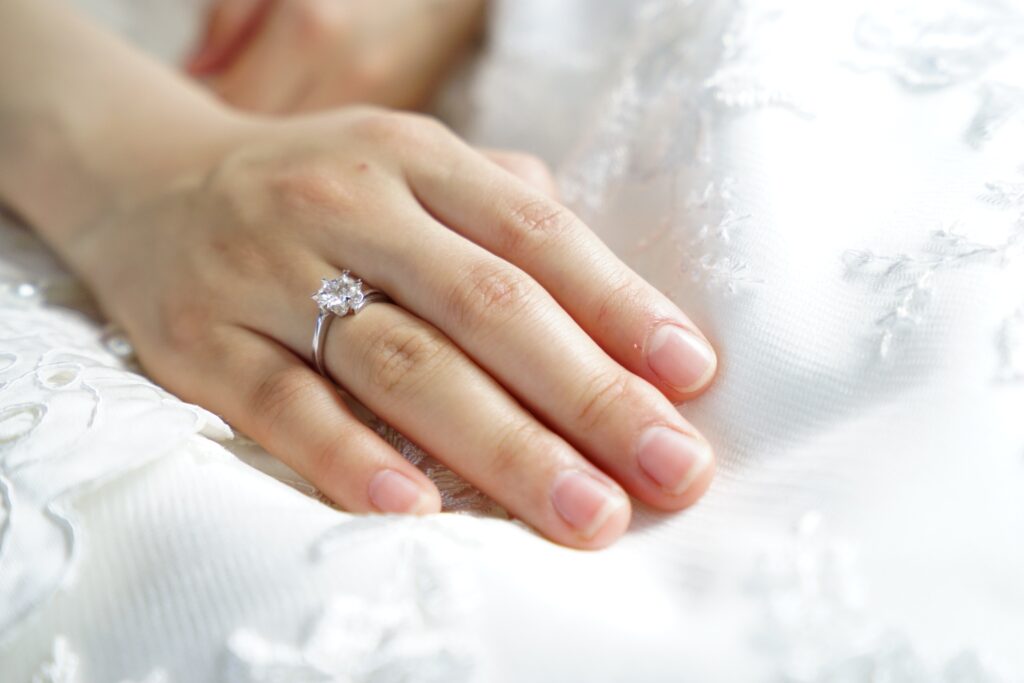
The wedding ring is worn on the ring finger
Not every hand gesture in China has a big cultural taboo—some are surprisingly soft, even nostalgic. Take the pinky finger, for example. It doesn’t scream “rude” like the Chinese middle finger might in some contexts. Instead, it’s usually tied to ideas like weakness, or subtly dismissing something as unimportant. It’s more like saying, “Eh, that’s nothing.” You might see kids jokingly stick out their pinky during arguments, but it’s never aggressive.
Then there’s the ring finger—quiet, almost ceremonial. Most people in China associate it with love, not because of Western influence, but through tradition too. It’s where the wedding ring goes, and that’s not random. In Chinese thought, the ring finger connects to the heart. There’s even an old belief that the vein from that finger goes straight to your chest. Romantic? Yeah, in a subtle, rooted way.
And don’t forget the childhood rituals. Ask anyone who grew up in China about “拉钩上吊,一百年不许变” (“pinky swear—break it and you're cursed for 100 years!”). It sounds dramatic, but it’s playful, too. Kids would hook pinkies, tap their thumbs, then chant that vow. It wasn’t just a promise—it meant trust, closeness, and a kind of magical contract. You’ll never mistake it for a chinese middle finger—it’s the opposite, really. It brings people closer, not pushes them away.
Practical etiquette advice for using hand gestures in China
When you're not fluent in Chinese, a small gesture can do wonders—just don’t go overboard. A light wave or open hand is enough to get attention. I once saw a traveler flail both arms at a noodle stand. The vendor just stood there confused. It wasn’t rude—just unclear. Keep it calm and deliberate. That usually works better.If you're pointing somewhere, try using your full hand instead of one finger. It feels more respectful here. One time at a museum, I asked where the restroom was and pointed quickly. The staff smiled and slowly used an open palm in return. That moment stuck with me—it was gentler, and somehow more polite.Really, the best move is to copy what locals do. Watch them. They don’t gesture much, but when they do, it’s subtle. Not stiff, just smooth. You don’t need to be perfect—you just don’t want to look loud or clumsy. A bit of observation goes a long way.
Want a deeper dive into Chinese customs and etiquette?Take a look here.
Frequently Asked Questions (FAQ)
Q: Is it okay to use emoji of the middle finger in Chinese group chats or social media?
It might seem like a harmless joke among friends, but using the middle finger emoji in Chinese chats—especially with people you don’t know well—can come off as childish or even hostile. While younger folks might take it lightly, many still associate it with disrespect due to Western influence. So unless you’re really close to the group, it’s better to keep things polite with a thumbs-up or a smiley. Honestly, nobody likes drama over a yellow hand icon.
Q: Do Chinese parents teach children not to use certain hand gestures?
Definitely. Most Chinese parents teach kids to avoid pointing at people, sticking out the tongue, or slamming objects with fingers. It’s more about being “wenming” (civilized), which is a big part of social behavior in school and home. You’ll even hear teachers remind students: “Don’t point, it’s rude.” So yeah, hand etiquette starts young here, just like “no elbows on the table” elsewhere.
Q: Can hand gestures be misinterpreted during business meetings in China?
Oh yes—especially if you’re used to expressive hand movements. Over-gesturing can seem overly dramatic or even aggressive in formal Chinese settings. Keep it calm, use open palms, and nod more than wave. If you’re handing someone your business card, always use both hands. It shows respect. A simple slip—like pointing while talking—might not offend, but it won’t earn points either.
Q: Is there a Chinese hand gesture equivalent to “come here” or “shoo away”?
There is, but it’s very different. To say “come here,” people use their whole hand palm down and pull it toward themselves—kind of like scooping soup. Using the Western finger-wiggle gesture (palm up) can look a bit flirtatious or childish. As for “shoo away,” a downward palm waving gesture is more common. You’ll see it used with street vendors or pets. It’s subtle but clear—and that’s kind of the point.
Q: Are there any hand gestures used specifically in Chinese religious or spiritual practices?
Yes, though they’re not part of daily life for most people. In Buddhism and Daoism, mudras (手印) are symbolic hand gestures used during prayer or rituals. You might see monks press their palms together in front of the chest—it’s called “hezhang” (合掌), a gesture of peace and respect. Visitors aren’t expected to use these, but knowing what they mean helps avoid unintentional rudeness, especially in temples.

